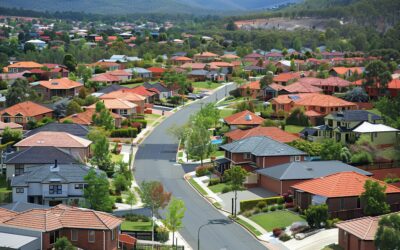Buying property
Help to Buy scheme
This is a shared equity program that enables first-home buyers to purchase property with just a 2% deposit. The federal government then provides 30% of the purchase price of an existing home, or 40% of a new home, in exchange for a portion for the home’s equity. Owners can then buy out the government’s share over time.
The scheme is capped at 10,000 places annually (40,000 places over four years). The income caps have increased for eligible buyers from $90,000 to $100,000 for singles and from $120,000 to $160,000 for joint applicants or single parents. Property caps have also been increased to better reflect the market in regional and capital centres in each state and territory.
Infrastructure initiatives
The budget has allocated funding to several major infrastructure initiatives across the country. These will likely impact housing development and reshape property markets in these areas. Some of the initiatives receiving funding include:
- Western Sydney, including for the South West Sydney Rail Extension
- Upgrades to Sunshine Station in Victoria
- The Victorian Road Blitz program
- Safety upgrades on the Bruce Highway in Queensland
- Kwinana Freeway upgrades in Western Australia
- Stuart Highway duplication between Darwin and Katherine
- Arthur Highway upgrades in Tasmania
Encouraging more tradies
One of the biggest barriers Australia has been facing in increasing housing supply is the shortage of skilled tradespeople. The federal government announced it would address this with a new Housing Construction Apprenticeship stream that will give eligible apprentices up to $10,000. It will be paid in $2,000 installments at six, 12, 24, 36 months and at the completion of their apprenticeship. This initiative will commence on 1 July 2025.
Foreign investors are out
It was announced foreign investors will be banned from purchasing existing homes in Australia for two years starting from 1 April 2025. Funds were also allocated to preventing “land banking” by foreign investors. This is intended to open up more opportunities for local buyers to purchase their own property.
Prefabricated homes
$54 million has been allocated to support the construction of prefabricated and modular homes. These are homes that are primarily constructed offsite before being assembled in their final location and could be built up to 50% faster than traditional homes.
Cost of living
Tax cuts
From 1 July 2026, the tax rate will be cut from 16% to 15% on income earned between $18,201 and $45,000. This will then reduce to 14% from 1 July 2027. Taxpayers could end up with an extra $268 in their pocket in the first year and $536 from the 27/28 financial year. The income threshold before the Medicare levy is applied will also be increased, potentially making around 1 million more Australians exempt from the levy or paying a reduced rate.
Electricity bill relief
Rebates on electricity bills will be extended by six months with households and small businesses receiving $150 toward their power. This rebate will be automatically applied over two quarterly instalments. This is intended to not only help with cost of living pressures, but also reduce inflation (the government predicts by about half a percentage point this year).
Childcare
The new 3-day guarantee ensures families are eligible for at least three days of subsidised childcare weekly, replacing the previous Child Care Subsidy Activity Test. This is due to commence on 5 January 2026 and is expected to benefit an additional 100,000 families in its first full financial year.
Health
Funding will be allocated to incentivise GPs to bulk-bill more patients. The goal is for nine out of 10 visits to the GP to be fully covered by Medicare.
There is also a boost to the Pharmaceutical Benefits Scheme (PBS), cutting the cost of a script from $31.60 to $25 from the start of 2026.
Changing jobs
Have you ever seen clauses in your work contract that say you cannot work for a competing business within a certain time frame of leaving your job? The government says these can suppress wages and so will ban the clauses for workers earning less than $175,000. This enables them to move to a competing business or start their own.
Businesses
No extension for the instant asset write-off
The tax benefit will end in July this year with no announcements for an extension. The instant asset write-off enables eligible businesses to claim a $20,000 deduction from their taxes, with this dropping to $1,000 in the next financial year.
Licensing statement: Rayne Finance ABN [70 605 100 838] is authorised under LMG Broker Services Pty Ltd Australian Credit Licence 517192. Disclaimer: (1) As with any financial scenario there are risks involved. This information provides an overview or summary only and it should not be considered a comprehensive analysis. You should, before acting in reliance upon this information, seek independent professional lending or taxation advice as appropriate and specific to your objectives, financial circumstances or needs. This publication is provided on the terms and understanding that: (2) LMG Broker Services Pty Ltd, Rayne Finance (Seed Lending Pty Ltd) and the authors, consultants and editors are not responsible for the results of any actions taken on the basis of information in this publication, nor for any error in or omission from this publication. (3) LMG Broker Services Pty Ltd, Rayne Finance (Seed Lending Pty Ltd) and the authors, consultants and editors, expressly disclaim all and any liability and responsibility to the maximum extent permitted by the law to any person, whether a purchaser or reader of this publication or not, in respect of anything, and of the consequences of anything, done or omitted to be done by any such person in reliance, whether wholly or partially, upon the whole or any part of the contents of this publication.
Explore other FAQs and Facts
How the property market looks as we head into 2025
Australia’s property market is shifting, with a clear divide between strong and weak performers. While Brisbane, Perth, and Adelaide see robust growth, Sydney, Melbourne, Canberra, and Hobart face slower gains. As interest rate cuts loom in 2025, understanding regional trends will be essential for buyers and investors alike.
December cash rate on hold: 6 reasons to be optimistic about 2025
The Reserve Bank of Australia has kept the cash rate on hold once again, maintaining its cautious stance. While hopes for a rate cut remain unfulfilled, there are six reasons to stay optimistic, even as inflationary pressures and low productivity continue to shape the RBA’s approach to economic stability.
Australian properties see record profits in 2024
The 2023-24 financial year marked a milestone for Australian property sellers, with 96% of houses sold nationwide yielding a median profit of $326,000. This trend reflects the long-term value growth of homes, with capital cities and regional areas both benefiting from a robust market and rising property prices.
The pros and cons of rentvesting
With housing prices up 37.8% since 2020, many Australians face tough choices between renting in desirable suburbs or buying further from city centres. Rentvesting offers a middle ground—renting where you want to live while investing in an affordable property. This approach can build wealth but requires careful financial planning.
5 reasons why this might be a great time to buy
With Australia’s property market cooling, some may see now as an opportune time to buy. While timing the market is tricky, reduced competition, rising rental prices, and potential long-term gains could make this a strategic moment for both first-home buyers and investors to consider entering the market.
How to consolidate tax debt
Struggling with ATO tax debt? If you miss payments, the ATO may charge 11.36% interest on unpaid amounts. One option is to consolidate your tax debt into your home loan, potentially saving on interest, though refinancing costs apply. Speak with a mortgage broker to explore this option and avoid further penalties.
How is interest calculated on my home loan?
Mortgage interest is calculated daily based on the remaining principal, but the reduction of the principal isn’t linear. In the early years, a larger portion of each payment goes toward interest. However, by making additional repayments or using an offset account, you can reduce the principal faster and pay less interest over the life of the loan.
How do green home loans work?
As Australians seek to minimise their carbon footprint, green loans are becoming popular. These loans finance energy-efficient homes, renovations, and eco-friendly products like solar panels, EVs, and insulation. With potentially lower rates and flexible terms, green loans also boost property value, as sustainable homes attract more views and sell faster.
Dream Home Dilemma: Should You Build or Buy your home?
Deciding whether to build a new home or buy an established one is a major step in your homeownership journey. Each choice has its own set of pros and cons, from the opportunity to customise your space to the convenience of moving into an existing home. Understanding these differences can help you make the best decision for your future.
9 things to prepare before buying a home
To ensure a smooth property purchase, start by boosting savings and avoiding job changes three months before applying for pre-approval. Check your credit report for errors, consult a mortgage broker, and choose a conveyancer. Research locations, attend open homes, and arrange inspections. Contact me for expert guidance and loan pre-approval.














